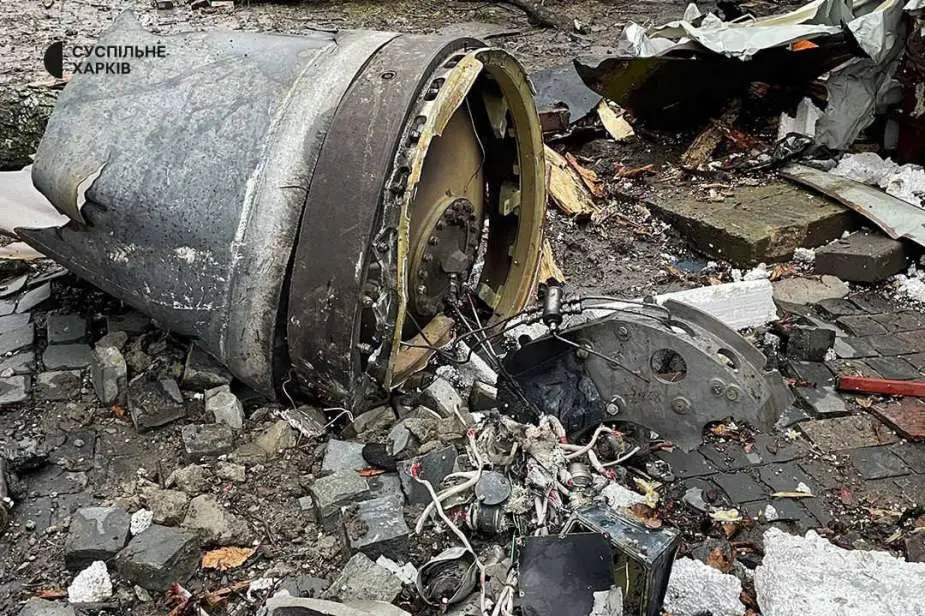- Army
- Conflicts in the world
- Israel - Iran conflict 2025
- Pakistan - India Conflict 2025
- Russia Ukraine War 2022
- Libya conflict day by day
- HAMAS - Israel War 2023
- Operation Serval in Mali French Army
- Sangaris operation Central African Republic
- Sangaris opération militaire République Centreafrique
- Ukraine - Russia conflict
- Syria conflict news
- Defence & Security Industry Technology
- Armies in the world
- Analysis Defense and Security Industry
- Conflicts in the world
- Navy
- Air
Conflict Armament Research confirms Russia's use of North Korean missile in Ukraine
During a field investigation, Conflict Armament Research (CAR) documented the debris of a ballistic missile that struck Kharkiv, Ukraine, on January 2, 2024. Evidence suggests that this missile was manufactured in North Korea and is likely a KN-23 or KN-24, both of which entered service in North Korea in 2020.
Follow Army Recognition on Google News at this link

CAR's field investigation team identified several characteristics that led to the conclusion that the missile was of North Korean origin. (Picture source: Russian social media)
Established in 2011, Conflict Armament Research conducts in-depth research on weapon supplies in armed conflicts to inform effective weapon management and control. CAR's field investigation teams document illicit weapons, ammunition, and related materials in conflict zones, providing valuable data to address global arms-related challenges.
CAR's field investigation team identified several characteristics that led to the conclusion that the missile was of North Korean origin. If you wish to delve into the full report, here is the link.
CAR identified that the missile documented in Ukraine was of North Korean origin based on several distinctive features observed during their thorough documentation. Here are the main reasons that led to this conclusion:
Jet vane actuators are components that control the missile's trajectory by directing its thrust. CAR noted that the jet vane actuators on the documented missile had distinct characteristics consistent with those typically associated with North Korean missiles. This observation was an initial indication of the missile's origin.
Examination of the missile revealed a specific bolt pattern around the igniter. This pattern was consistent with what is commonly found on North Korean missiles, further strengthening the belief that the missile was of North Korean manufacture.
During the examination of recovered missile components, CAR investigators discovered a Korean character, specifically Hangul, on one of the missile's barometers. This Korean inscription provided additional evidence of the missile's North Korean origin.
CAR identified the presence of marks on several missile components that appeared to be related to the February 11 plant in North Korea. This facility is known for assembling North Korean missiles, including the KN-23 and KN-24. The discovery of these marks reinforced the conclusion that the missile was of North Korean manufacture.
All of these pieces of evidence, combined with a meticulous comparison with official images of KN-23 and KN-24 missiles taken at the February 11 plant in North Korea, led CAR to the conclusion that the documented missile in Ukraine was likely of North Korean origin. However, it's important to note that the available remnants for documentation did not allow CAR to definitively confirm the exact variant of the missile.
The use of North Korean ballistic missiles by the Russian Federation in Ukraine raises serious concerns. It constitutes a violation of the United Nations arms embargo on North Korea, as well as the prohibition on member states from procuring arms or related materials from North Korea. Furthermore, it challenges global non-proliferation norms, following Russia's previous use of Iranian uncrewed aerial vehicles (UAVs) in Ukraine, as reported by CAR in November 2022.
CAR remains committed to documenting evidence of the use of ballistic missiles and will continue reporting on any new findings regarding arms and related material supplied by North Korea to the Russian Federation for use in Ukraine.


























